
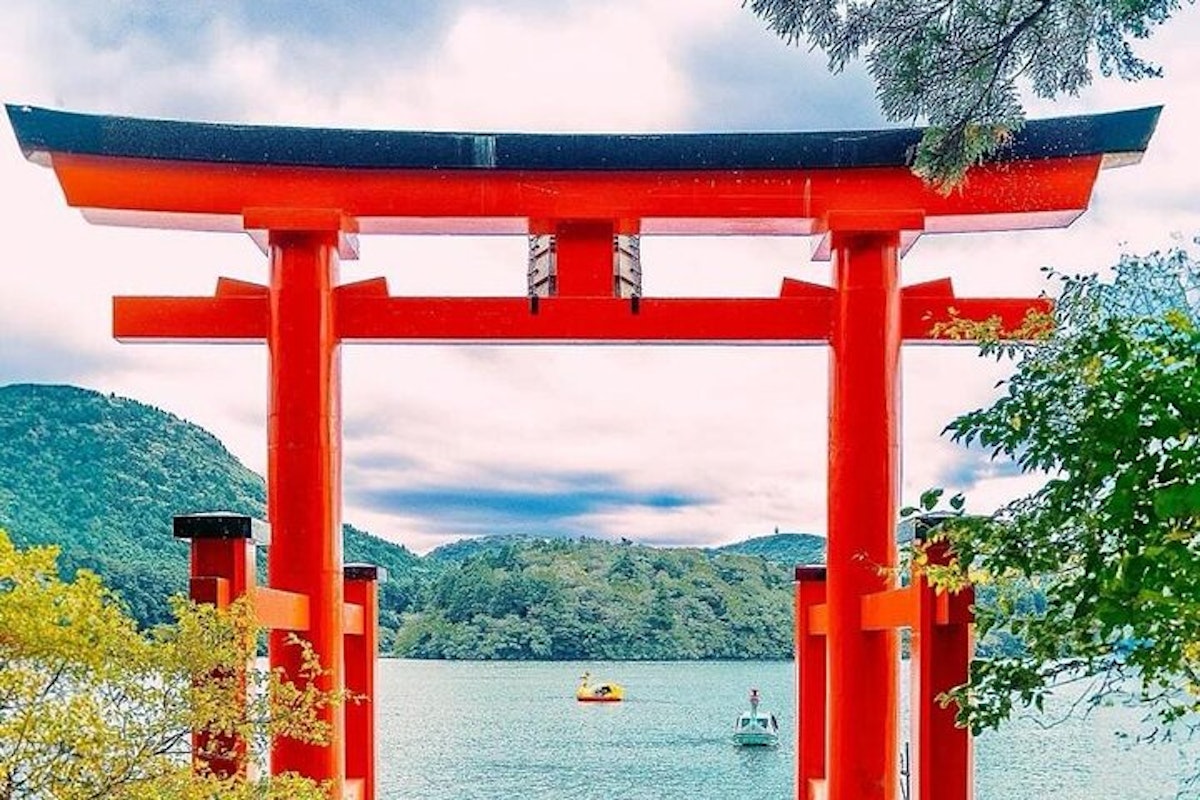
하코네 신사는 일본에서 가장 존경받는 신토 신사 중 하나로, 해안에 위치하고 있습니다 아시 호수울창한 숲으로 둘러싸여 있고 호수와 후지산의 숨막히는 전경을 감상할 수 있는 이곳은 역사, 정신, 자연의 아름다움이 어우러진 곳입니다.
이 가이드는 하코네 신사의 주요 특징과 하이라이트를 안내하여 방문객들이 그 중요성을 더 쉽게 이해하고 방문을 즐길 수 있도록 합니다.
하코네 신사의 역사는 나라 시대로 거슬러 올라가며, 창건 시기는 757년으로 추정됩니다. 그것과 오랜 인연이 있습니다 가마쿠라 막부특히 미나모토노 요리토모(Minamoto no Yoritomo)는 이곳에서 전투의 승리를 기원했습니다.
이 신사는 수세기 동안 사무라이, 황제, 일반 시민 모두를 매료시키는 예배 장소였습니다. 신사와 가마쿠라 막부의 관계는 가마쿠라 막부와 신사의 역사에서 중요한 부분을 차지하며, 일본의 정치적, 정신적 생활에서 신사의 역할을 반영합니다.
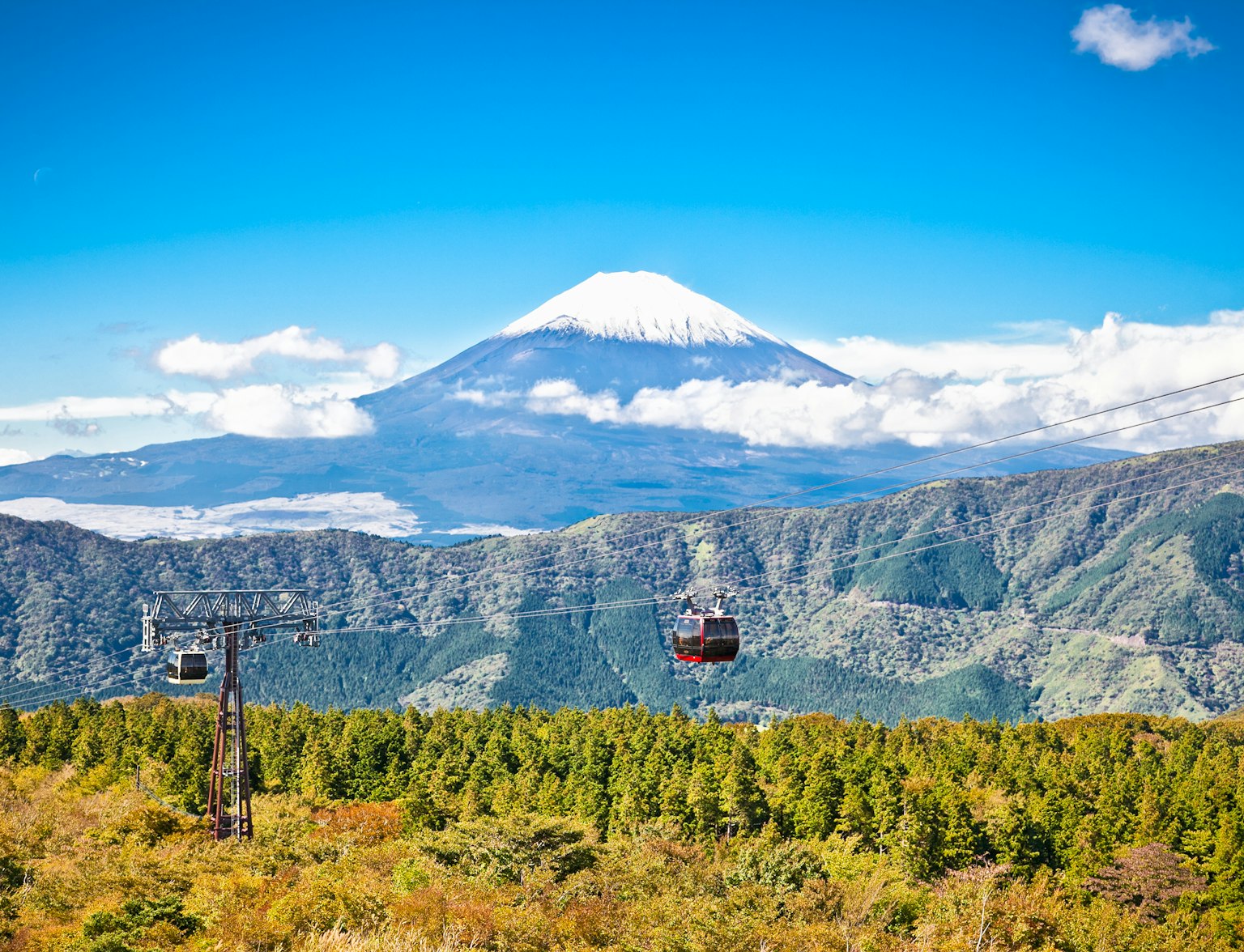
도쿄에서 후지산과 하코네까지 매혹적인 항해를 떠나보세요.
본당 단지는 우뚝 솟은 삼나무 숲 속에 위치해 있어 고요한 분위기를 더합니다. 가까이 다가가면 눈에 띄는 붉은색으로 칠해진 도리이(鳥居)를 통과하게 됩니다. 이 문은 신사의 상징일 뿐만 아니라 물질계와 영계의 경계를 표시하기도 합니다.
방문객들은 종종 정화 분수에서 손과 입을 씻는 시간을 갖는데, 이는 신토 신사에서 흔히 볼 수 있는 관행입니다. 전통적인 건축 양식의 본당은 기도를 올리고 축복을 구할 수 있는 곳입니다. 홀의 디자인은 자연과의 조화를 강조하는 신토 건축물의 단순함과 우아함을 반영합니다.
하코네 신사에서 가장 상징적인 명소 중 하나는 아시노 호수의 물 속에 서 있는 큰 도리이입니다. 헤이와노토리이(平和の鳥鳥居)로 알려진 이 문은 호수와 함께 멋진 이미지를 연출합니다 후지산 배경에서. 많은 방문객들이 사진을 찍기 위해 이곳에 오며, 특히 이른 아침이나 늦은 오후에 빛이 물에 마법 같은 반사를 만듭니다.
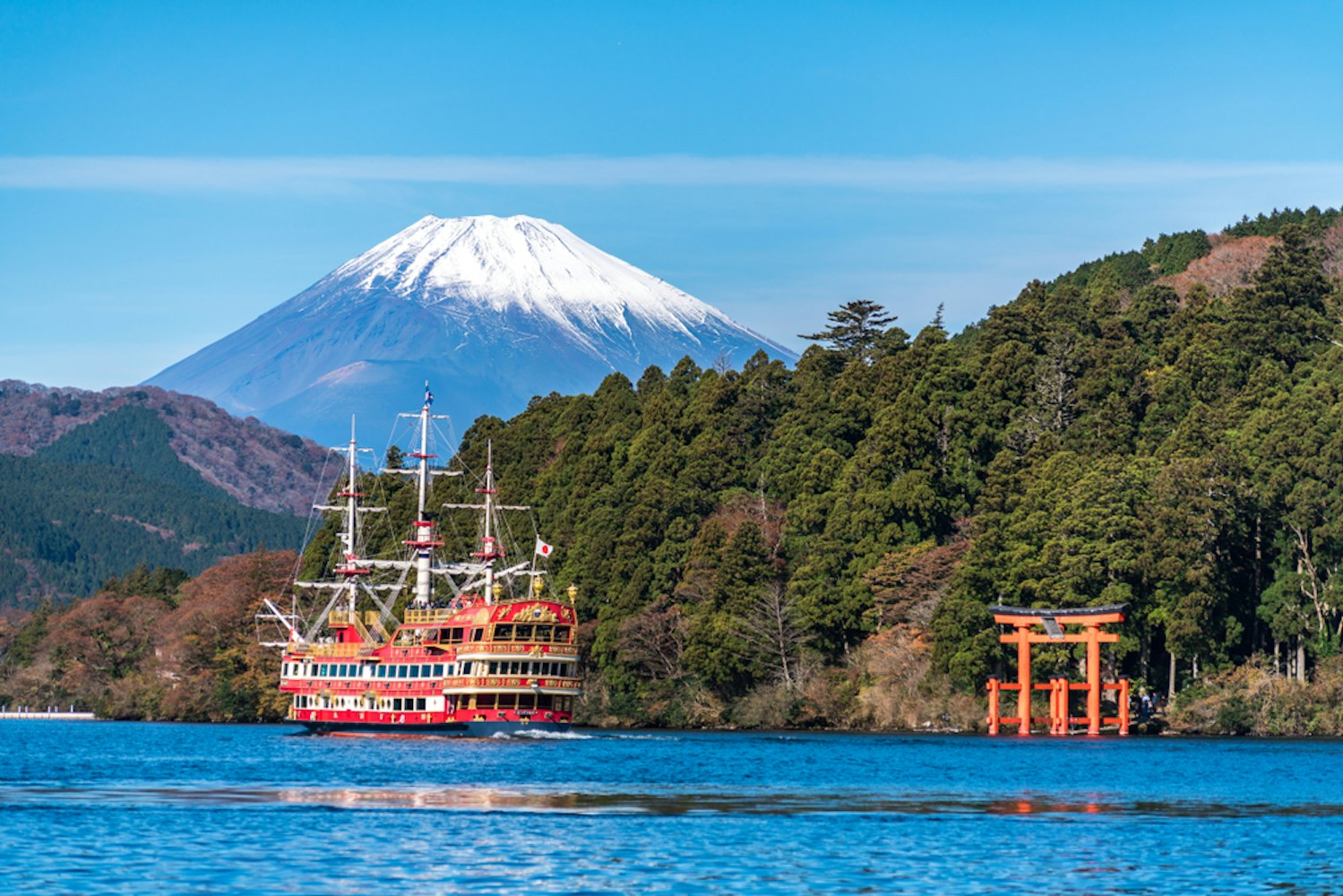
이 도리이는 영적 세계와 자연 세계의 연결을 상징합니다. 그것은 장소의 신성함과 환경 존중의 중요성을 상기시켜줍니다. 호숫가에서 바라보든 호수에서 배를 타든 도리이는 방문한 후에도 오랫동안 기억에 남는 광경입니다.
하코네 모토쓰미야 신사는 고마가타케산 정상에 위치한 하코네 신사 단지의 일부입니다. 이곳에 가려면 하코네 고마가타케 로프웨이를 타면 주변 산과 계곡의 탁 트인 전망을 감상할 수 있습니다. 타는 것 자체가 경험이며 풍경에 대한 독특한 관점을 제공합니다.
일단 정상에 오르면 신사는 본당에 비해 더 조용하고 한적한 분위기를 제공합니다. 특히 맑은 날에는 후지산, 아시노 호수, 태평양을 볼 수 있습니다. 모토쓰미야 신사는 방문객들이 자신을 둘러싼 자연의 아름다움을 사색하고 즐길 수 있는 곳입니다.
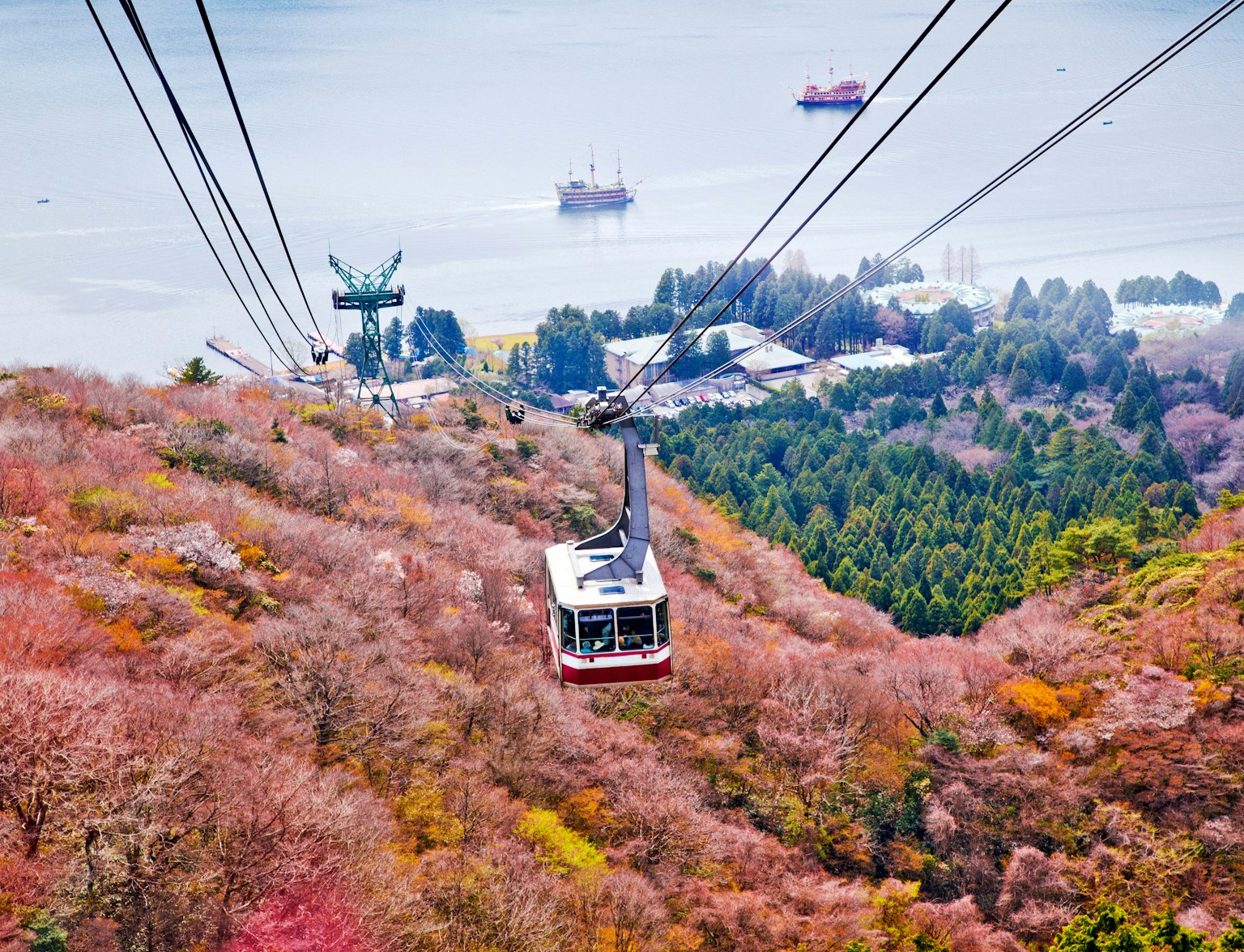
코마가타케 로프웨이 어드벤처를 통해 하코네의 매력을 발견하세요.
하코네 신사 근처에 위치한 구즈류 신사는 아시노 호수에 서식한다고 믿어지는 아홉 개의 머리를 가진 용의 신을 모시는 곳입니다. 이 신사는 번영, 사업 성공, 결혼에 대한 축복을 찾는 사람들에게 인기가 있습니다. 머리가 아홉 개 달린 용의 이야기는 지역 민속에 뿌리를 두고 있는데, 이 용은 원래 파괴적인 힘이었지만 나중에는 신사의 힘에 의해 진정되었습니다.
이 신사는 하코네 신사와 함께 자주 방문되는데, 그 이유는 하코네 신사가 영적인 의미에서 밀접하게 연결되어 있기 때문입니다. 방문객들은 종종 용신에게 제물을 바치며 보호와 행운을 빌어줍니다. 용의 이야기는 방문에 신비로운 요소를 더하여 방문객을 이 지역의 고대 신화와 연결합니다.
하코네 신사는 정신적인 목적지일 뿐만 아니라 하코네 지역을 탐험하는 출발점이기도 합니다. 인근 관광 명소로는 경치 좋은 보트를 탈 수 있는 아시 호수(Lake Ashi)와 다양한 관광 명소로 편리하게 이동할 수 있는 하코네 등산 버스(Hakone Tozan Bus)가 있습니다.
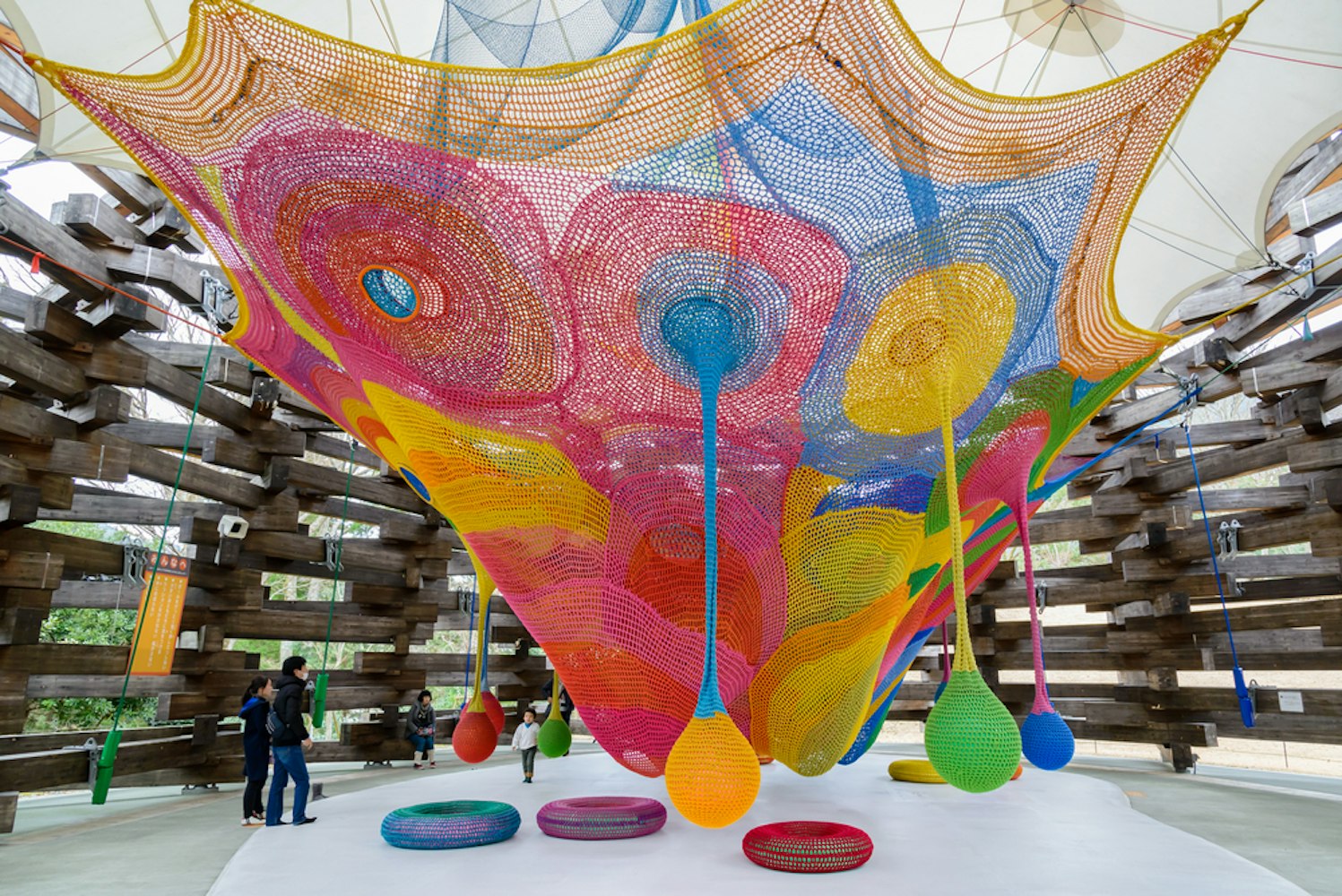
하코네 마을 자체에는 전통적인 료칸 여관에서 온천에 이르기까지 많은 것을 제공합니다. 많은 방문객들이 하코네 신사 방문과 하코네 신사 방문을 결합합니다 하코네 조각 미술관 (Hakone Open-Air Museum), 오와쿠다니 계곡, 하코네 로프웨이. 이러한 명소는 문화, 자연 및 레크리에이션 경험이 혼합된 경험을 제공하여 하코네를 국내외 관광객 모두에게 인기 있는 목적지로 만듭니다.
접근: 하코네 신사는 도쿄에서 쉽게 접근할 수 있습니다 오다큐선 하코네유모토역까지. 거기에서 버스나 택시를 타고 신사로 갈 수 있습니다. 이 여행은 산을 가로지르는 경치 좋은 라이딩을 제공하여 이 지역의 자연의 아름다움을 엿볼 수 있습니다.
방문하기 가장 좋은 시기: 신사는 일년 내내 방문할 수 있지만 계절마다 다른 경험을 제공합니다. 봄에는 벚꽃이 피고, 여름에는 무성한 녹지, 가을에는 선명한 단풍이 드나들고, 겨울에는 인파가 적고 고요한 분위기가 있습니다. 이른 아침이나 늦은 오후는 가장 바쁜 시간을 피하기에 이상적입니다.
복장: 신사는 산에 있기 때문에 특히 서늘한 계절에는 편안한 신발을 신고 가벼운 재킷을 가져오는 것이 좋습니다. 신사 주변의 길은 가파르기 때문에 걸을 준비를 하세요.
문화 에티켓: 신사를 방문할 때는 그 장소의 신성한 자연을 존중하는 것이 중요합니다. 여기에는 단정하게 옷을 입고, 조용히 말하고, 기도와 정결을 위한 적절한 절차를 따르는 것이 포함됩니다. 대부분의 지역에서 사진 촬영이 허용되지만 제한된 위치를 나타내는 표지판에 유의하십시오.
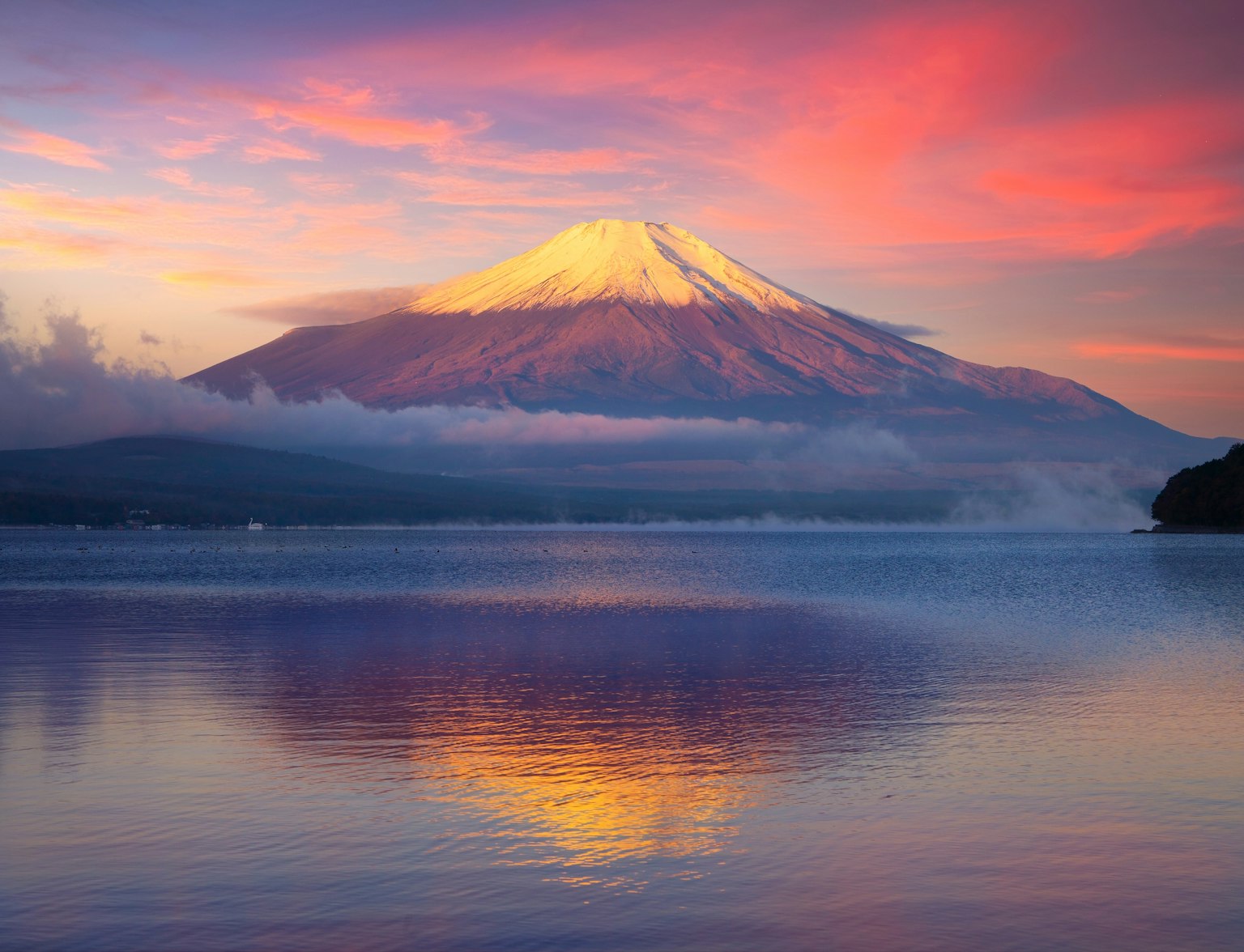
영어를 구사하는 전문 가이드와 함께 일본의 자연과 문화적 명소를 발견하십시오.
하코네 신사는 일본의 정신적 전통에 깊이 뿌리를 두고 있습니다. 일본의 토착 신앙인 신도(神道)는 산, 강, 숲과 같은 자연적 특징에 깃들어 있다고 믿어지는 가미 또는 영혼 숭배에 중점을 둡니다. 하코네 신사는 이러한 영혼들에게 바쳐져 있어 자연과 정신이 밀접하게 얽혀 있는 곳입니다.
방문객들은 신사의 아름다움에 감탄할 뿐만 아니라 영적인 지도와 축복을 구하기 위해 종종 신사를 찾습니다. 건강을 위해서든, 사업에서 성공을 위해서든, 개인의 행복을 위해서든, 신사는 사람들이 신과 연결되고 자신의 삶을 성찰할 수 있는 장소입니다.
하코네 신사는 그 신비로움을 더하는 전설로 가득합니다. 가장 잘 알려진 것 중 하나는 머리가 아홉 개 달린 용에 대한 전설로, 한때 파괴의 세력이었지만 신사의 카미의 힘에 굴복했습니다. 이 전설은 자연의 힘과 조화의 필요성 사이의 균형을 상기시켜 줍니다.
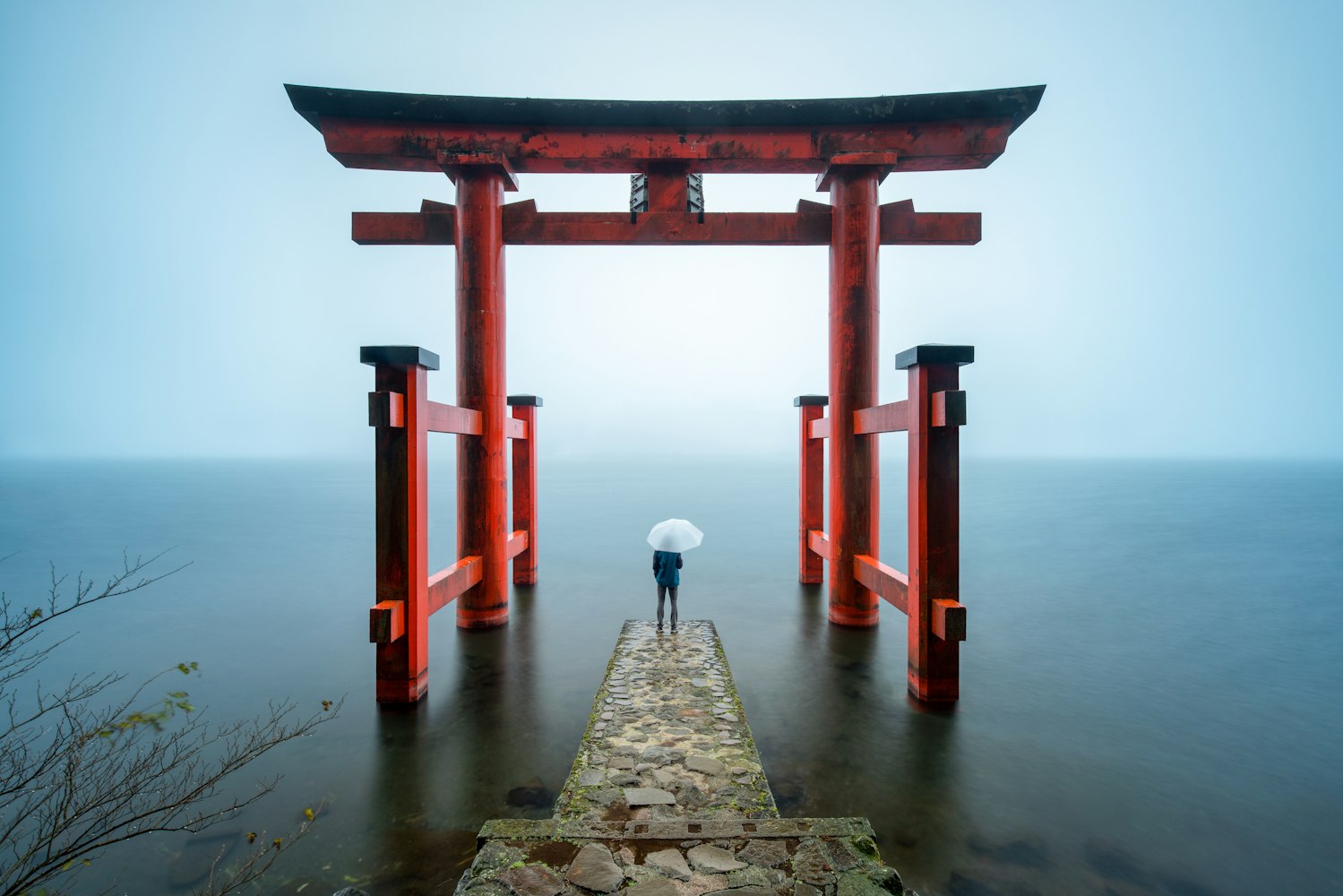
또 다른 전설은 신사의 창립에 대해 말하는데, 하코네의 카미가 꿈에 신사 설립자에게 나타나 아시 호수 기슭에 예배 장소를 세우라고 지시했다고 합니다. 여러 세대에 걸쳐 전해 내려온 이 이야기는 신사의 정체성에 없어서는 안 될 부분이 되고 있습니다.
하코네 신사는 일본의 영적 수행을 엿볼 수 있는 것 이상을 제공하는 여행지입니다. 역사, 자연, 영성이 어우러져 독특한 경험을 선사하는 곳입니다. 멋진 전망, 풍부한 역사 또는 영적 중요성을 위해 방문하든 하코네 신사는 일본에서 꼭 봐야 할 곳입니다.
우뚝 솟은 삼나무 사이를 걷거나, 아시코 호수의 상징적인 도리이를 바라보거나, 고마가타케산의 모토쓰미야 신사에 오르면 하코네 신사가 방문 후에도 오랫동안 기억에 남는 평화롭고 사색적인 경험을 제공한다는 것을 알게 될 것입니다.
하코네 신사는 무엇으로 유명합니까?
하코네 신사는 아시 호수 옆에 위치하고, 호수의 상징적인 빨간 도리이이며, 신토 전통에서 깊은 역사적, 영적 중요성을 지니고 있는 것으로 유명합니다. 이 신사는 천 년 이상 숭배 장소였으며 자연의 아름다움과 일본 문화와의 연결로 인해 방문객을 끌어들였습니다.
하코네 신사는 방문할 가치가 있습니까?
예, 하코네 신사는 방문할 가치가 있습니다. 자연 경관, 역사적 중요성 및 문화 체험의 독특한 조합을 제공합니다. 신사의 평화로운 환경과 상징적인 전망은 하코네 지역 여행의 하이라이트입니다.
하코네 신사는 얼마나 오래되었습니까?
하코네 신사는 757년에 창건되었으니 1,260년이 넘었습니다. 일본 역사를 통틀어 중요한 정신적 장소였습니다.
하코네에 있는 도리이의 의미는 무엇입니까?
하코네 신사의 도리이는 신성한 공간의 입구를 상징합니다. 그것은 평범한 세계에서 신사의 영적 영역으로의 전환을 나타냅니다. 아시 호수의 문은 특히 유명하며 자연과 정신의 조화를 나타냅니다.
하코네 신사는 몇 시에 가야 할까요?
가장 좋은 시기 하코네 방문 신사는 이른 아침 또는 오후 늦게에 있습니다. 이 시기는 인파가 적고 더 평화로운 경험을 제공하며 신사와 그 주변을 즐기기에 이상적입니다.



